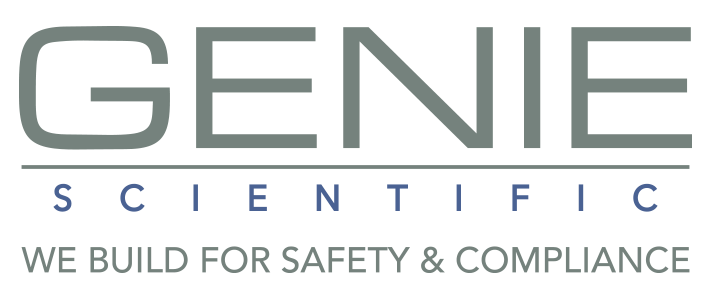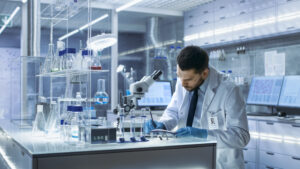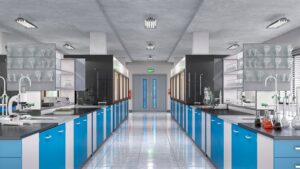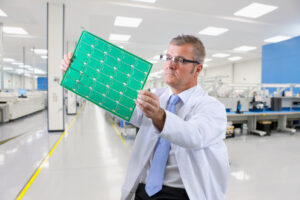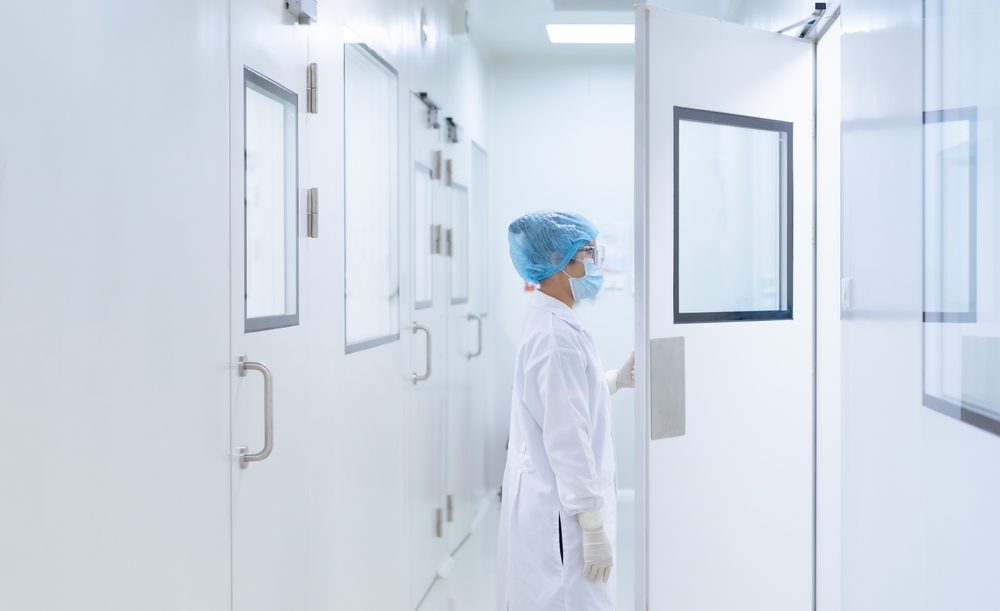
Creating a Cleanroom Lab: Essential Furniture and Equipment
Creating a cleanroom lab is a meticulous process that goes far beyond simply ensuring a sterile environment. Whether it’s for the pharmaceutical, biotechnology, or electronics industry, the integrity of your work hinges on the cleanliness and functionality of the lab space.
Cleanrooms are designed to control airborne particles, contaminants, and even temperature fluctuations, making the right furniture and equipment an absolute necessity.
From the materials used to the layout and design of the space, every decision counts. In this article, we’ll look at the essential furniture and equipment that help maintain the integrity of your cleanroom, enhance operational efficiency, and ensure the safety of both your team and your work.
We’ll also discuss why specialized solutions, like modular casework and powder-coated steel furniture, are invaluable in creating a high-functioning and compliant lab environment.
The Role of Cleanroom Lab Furniture
In a cleanroom lab, furniture is more than just a functional element—it plays a crucial role in maintaining the integrity of the environment. Cleanroom lab furniture must meet specific standards to help control contaminants, support lab processes, and enhance worker efficiency.
Purpose of Specialized Furniture
Unlike typical office or lab furniture, cleanroom lab furniture is designed to reduce the risk of contamination. It must be non-porous, smooth, and easy to clean. Materials that attract dust, bacteria, or particles are strictly avoided, as even the smallest contaminants can interfere with sensitive processes.
By using specialized furniture, cleanroom labs ensure that their environment stays as sterile as possible, supporting everything from research and development to product testing.
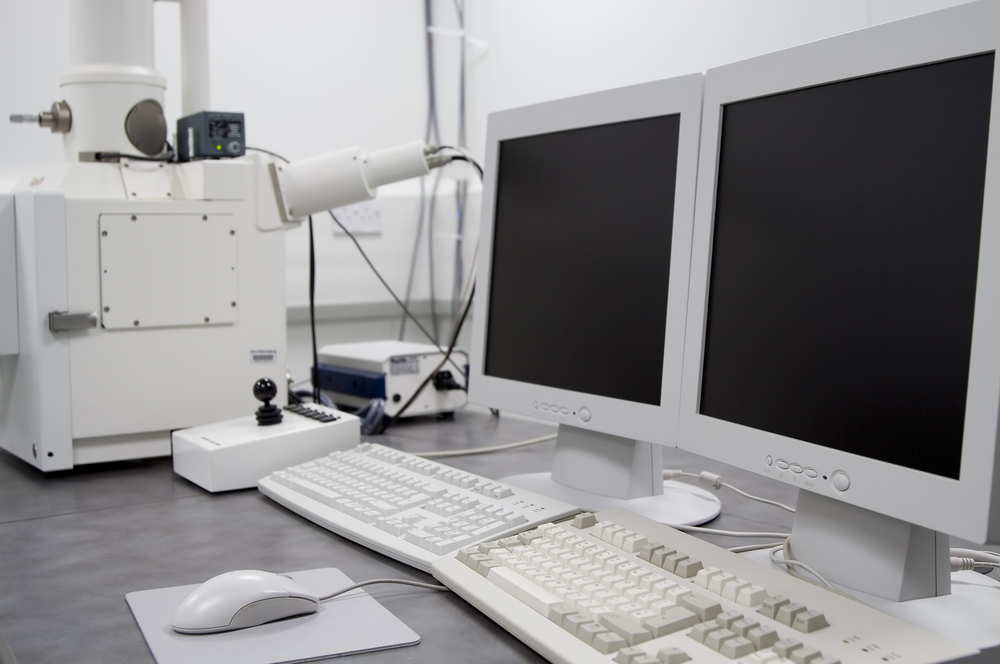
Materials Used
The materials used for cleanroom lab furniture are chosen specifically for their resistance to corrosion, contamination, and ease of maintenance. Powder-coated steel is a popular choice because of its durability, resistance to rust, and its smooth, easily cleanable surface.
Stainless steel, another common material, is similarly robust and resistant to chemicals, making it ideal for labs where harsh substances are handled. These materials maintain cleanliness and contribute to the longevity of the furniture, ensuring that it remains in good condition even after years of use in a demanding environment.
Durability and Maintenance
One of the key factors in selecting cleanroom lab furniture is its durability. The demands of a cleanroom environment—high traffic, exposure to chemicals, and the need for frequent cleaning—require furniture that can withstand wear and tear. Well-constructed cleanroom furniture is designed to last, minimizing the need for frequent replacements.
Easy maintenance is another important consideration. Furniture that can be cleaned with minimal effort helps ensure that the lab remains compliant with cleanliness standards, ultimately saving time and resources.
Essential Cleanroom Lab Furniture
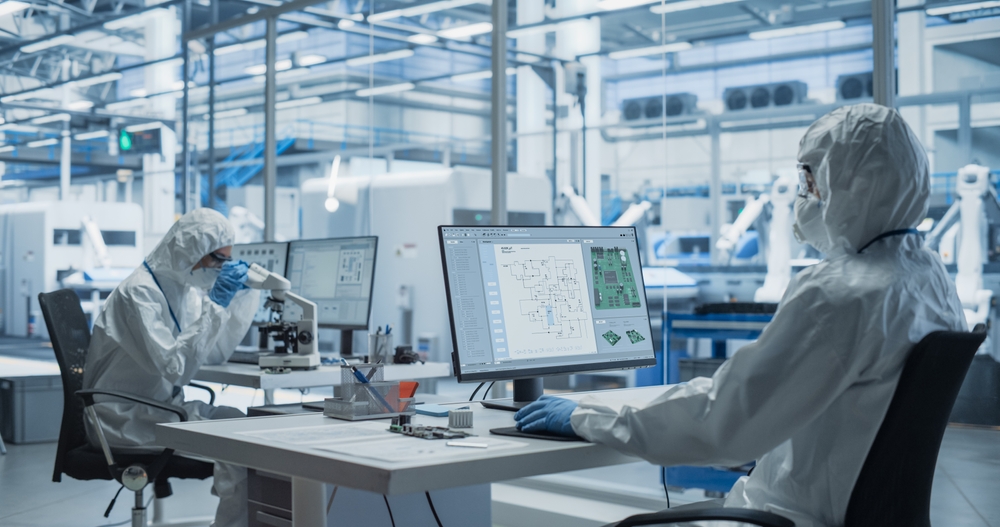
Selecting the right furniture for a cleanroom lab is a critical step in creating a functional and compliant space. Each piece must not only meet stringent cleanliness requirements but also support the workflow and efficiency of the lab. Below are some key furniture essentials for cleanroom environments:
Workbenches and Desks
Workbenches and desks form the backbone of any cleanroom setup. These surfaces must be durable, ergonomic, and resistant to contamination. Powder-coated steel workbenches are a popular choice due to their smooth surfaces, which are easy to clean and sanitize. Ergonomic designs enhance productivity by ensuring that lab personnel can work comfortably during long hours of detailed tasks.
Storage Units
Effective storage solutions are vital to keeping cleanrooms organized and clutter-free. Modular cabinets and shelving systems, especially those made from powder-coated steel or stainless steel, offer both durability and flexibility. Adjustable configurations allow labs to adapt to changing needs, while the non-porous surfaces prevent the accumulation of dust and particles.
Seating and Stools
Cleanroom seating must strike a balance between comfort and hygiene. Chairs and stools designed for cleanrooms often feature non-fabric surfaces and minimal seams to prevent particle buildup. Anti-static or ESD (Electrostatic Discharge) chairs may also be required for labs handling sensitive electronics.
Custom Modular Units
Modular furniture is an invaluable asset in cleanroom labs. It allows for the efficient use of space and can be tailored to the specific needs of the lab. Genie Scientific’s powder-coated modular casework is an excellent example of this, offering durability, ease of cleaning, and the ability to adapt as workflows evolve.
By investing in the right cleanroom furniture, labs can maintain compliance with cleanliness standards while optimizing space and enhancing productivity.
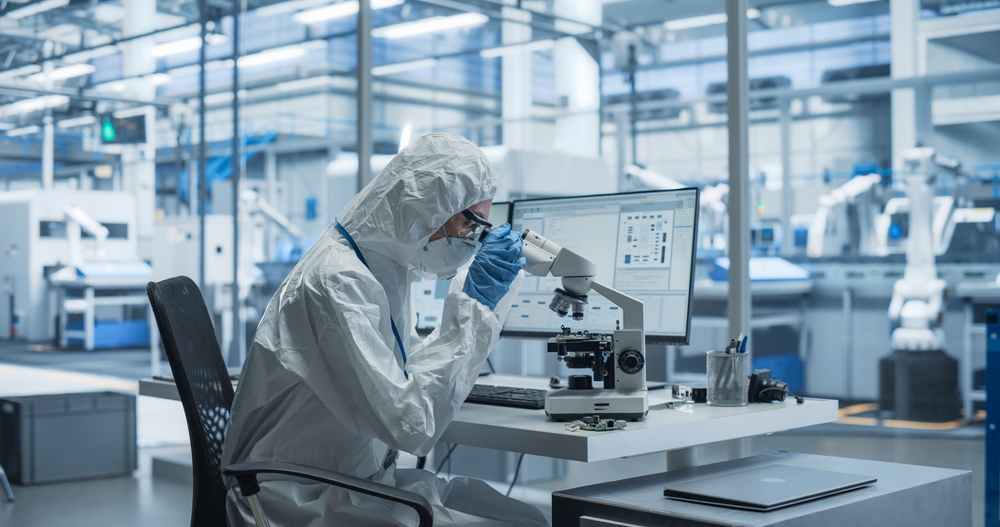
Cleanroom Equipment You Can’t Overlook
Beyond furniture, cleanroom labs rely on specialized equipment to maintain sterility, ensure safety, and support precision in daily operations. Investing in the right tools enhances productivity and ensures compliance with rigorous cleanroom standards. Here are some indispensable cleanroom equipment solutions:
Fume Hoods
Fume hoods are essential for labs handling hazardous chemicals or volatile compounds. These systems protect personnel by capturing and removing harmful fumes from the workspace.
Genie Scientific specializes in durable steel fume hoods designed to meet cleanroom lab specifications, ensuring both safety and ease of maintenance. Selecting the appropriate type—such as ducted, ductless, or laminar flow hoods—depends on the lab’s specific applications.
Additional Reading: The Evolution of Laboratory Fume Hoods: What’s New in 2024
HEPA Filters and Airflow Systems
Cleanrooms depend on controlled airflow to minimize contamination. High-Efficiency Particulate Air (HEPA) filters are critical for maintaining air purity by capturing up to 99.97% of particles as small as 0.3 microns. Airflow systems, including laminar flow cabinets, help create a controlled environment where sensitive work can be conducted without risk of particle interference.
Cleanroom labs must meet ISO Cleanroom Specifications and Standards.
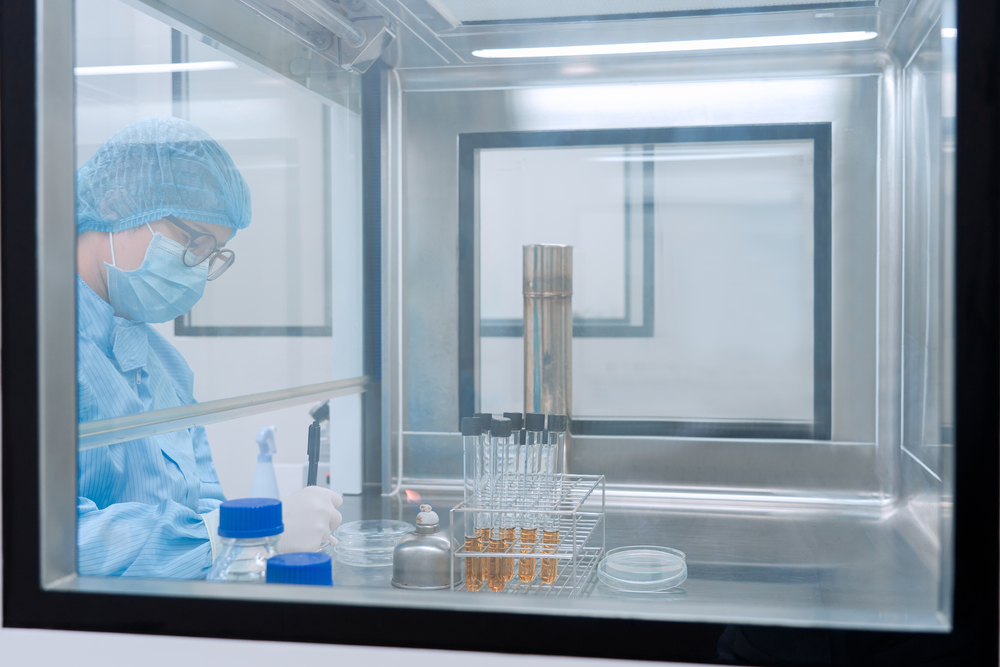
Autoclaves and Sterilizers
Sterilization is the cornerstone of cleanroom operations, making autoclaves and sterilizers indispensable. These devices ensure that tools, glassware, and other reusable items are free from contaminants. Cleanroom-specific models are designed to be compact and easy to operate without compromising on effectiveness.
Storage for Chemicals and Hazardous Materials
Safe storage solutions for chemicals and hazardous materials are non-negotiable in a cleanroom lab. Cabinets equipped with ventilation systems and made from corrosion-resistant materials ensure compliance with safety standards while protecting the integrity of the stored substances.
By equipping a cleanroom with these essential tools, labs can maintain the highest levels of cleanliness, safety, and operational efficiency. Each piece of equipment plays a vital role in supporting the critical work performed in these specialized environments.
Cleanroom Flooring and Surfaces
The flooring and surfaces in a cleanroom play a pivotal role in maintaining hygiene, safety, and comfort. From reducing contaminants to ensuring ergonomic support, every detail matters. Choosing the right materials can make all the difference in achieving a compliant and efficient cleanroom environment.
Non-Porous and Easy-to-Clean Materials
Cleanroom lab flooring and surfaces must be made from materials that are non-porous, smooth, and resistant to chemicals. These properties prevent the accumulation of dirt, bacteria, and other contaminants, making cleaning both effective and efficient. Common options include epoxy resin flooring and seamless vinyl surfaces, which are durable, low-maintenance, and easy to sanitize.
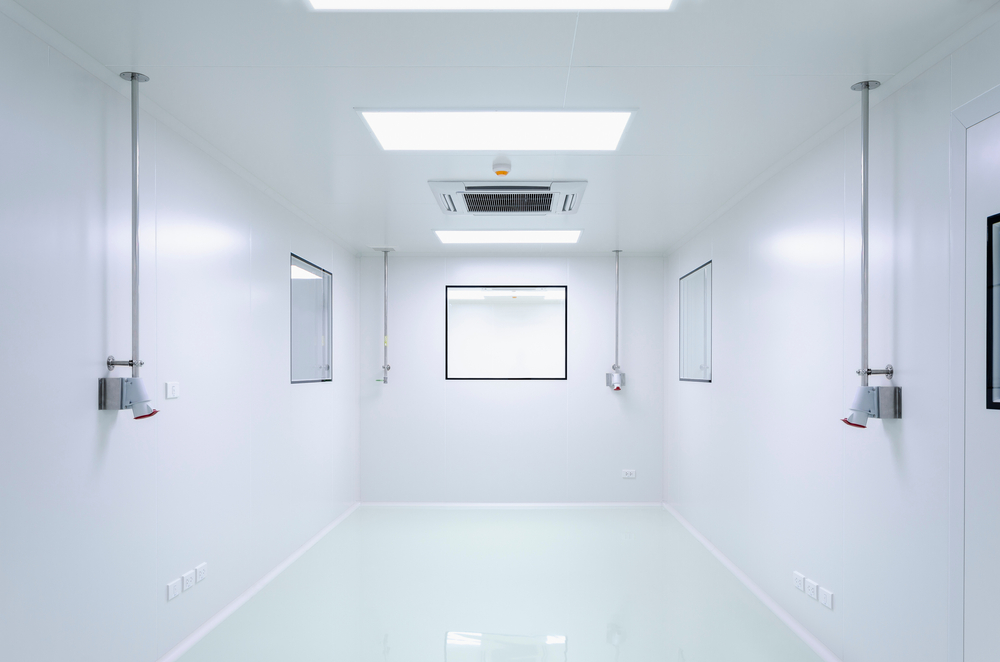
Minimizing Particle Generation
Every component of a cleanroom, including flooring, must minimize particle generation. Antistatic or conductive flooring is often used in labs where sensitive electronics are handled, as it reduces the risk of electrostatic discharge (ESD) while preventing dust buildup.
Ergonomics and Safety
Cleanroom lab flooring isn’t just about cleanliness—it also impacts the safety and comfort of personnel. Anti-slip surfaces reduce the risk of accidents in environments where liquid spills or chemicals may be present.
Additionally, ergonomic flooring options, such as cushioned mats, can help reduce fatigue for staff who spend long hours standing, promoting better productivity and overall well-being.
Integration with Cleanroom Design
To achieve a seamless and contamination-free environment, the choice of flooring and surface materials must align with the overall cleanroom lab design. Proper installation, such as coved flooring, made from resin or vinyl, that eliminates crevices where contaminants can accumulate, further ensures compliance with cleanliness standards.
Investing in high-quality flooring and surfaces supports cleanliness and safety and enhances the long-term functionality of the cleanroom. By selecting materials that align with specific cleanroom lab needs, facilities can achieve a durable and compliant foundation for their operations.
Lighting and Power Supply
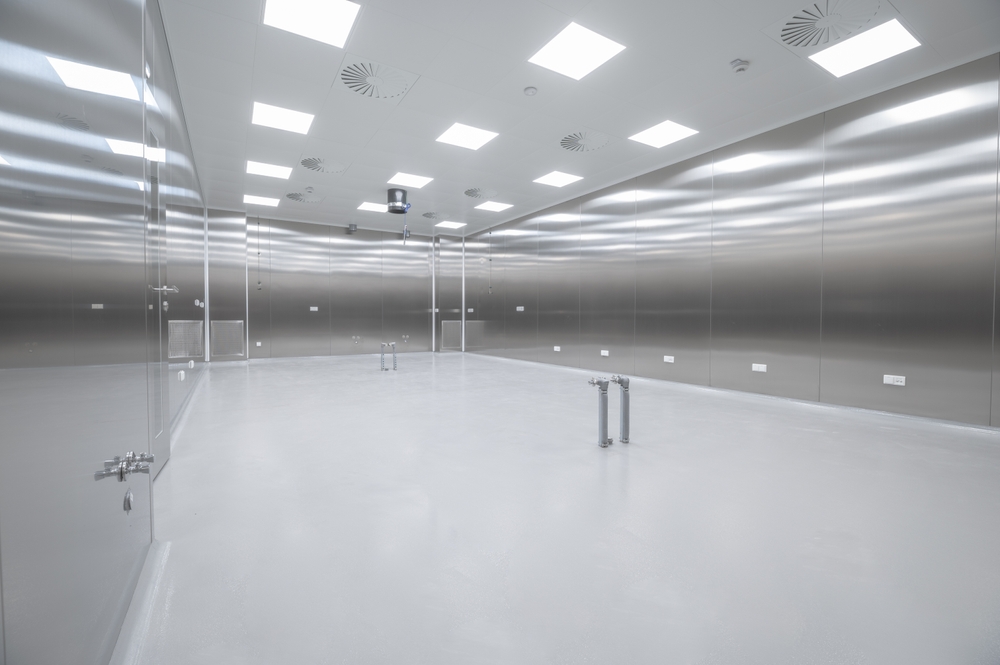
Lighting and power supply are critical yet often overlooked components in cleanroom lab design. Proper lighting enhances precision and reduces errors, while a stable power supply ensures uninterrupted operation of essential equipment. Both elements must be carefully planned to align with cleanroom standards and workflows.
Proper Lighting Solutions
Cleanroom lab lighting must provide bright, consistent illumination without creating shadows or glare. LED lighting is a preferred choice due to its energy efficiency, longevity, and ability to maintain brightness over time. Additionally, LED lights generate less heat, reducing the burden on cleanroom HVAC systems.
To prevent particle accumulation and ensure ease of cleaning, light fixtures should be sealed and recessed into the ceiling. Many cleanrooms also require lighting with specific color temperatures to reduce eye strain and improve focus during detailed tasks.
Power Supply Considerations
The power needs of a cleanroom lab go beyond simply plugging in equipment. A reliable and stable electrical infrastructure is essential to avoid interruptions during critical processes. Key considerations include:
- Surge Protection: To safeguard sensitive equipment from power fluctuations.
- Backup Power Systems: Uninterruptible power supplies (UPS) or generators ensure continuity during outages, especially in labs conducting temperature-sensitive or time-critical work.
- Specialized Outlets: Cleanroom-specific outlets that minimize dust accumulation and meet safety standards.
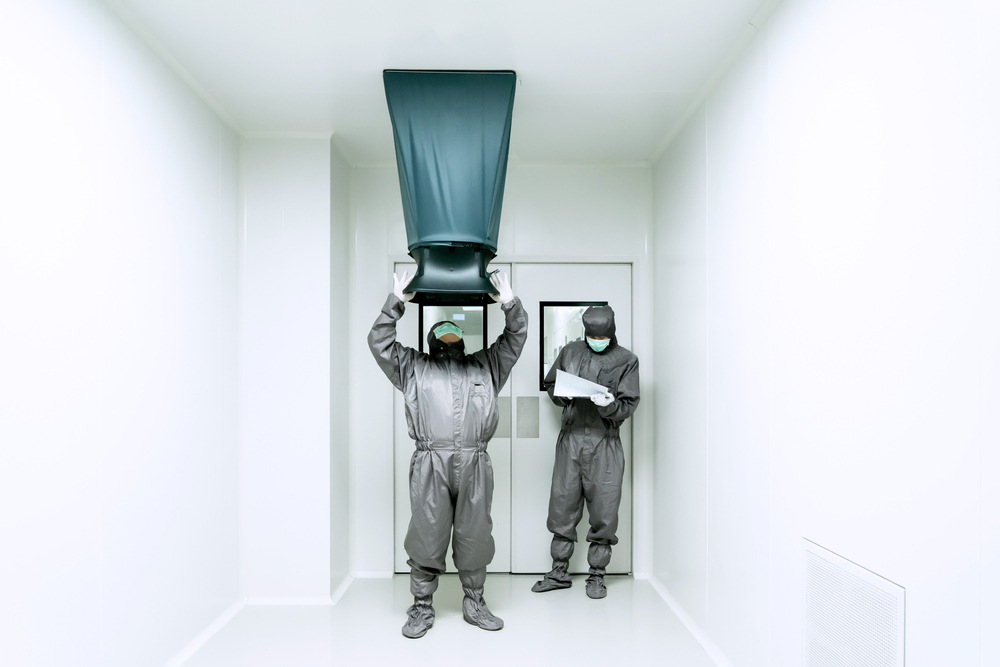
Integration with Cleanroom Equipment
Power outlets and lighting systems should be strategically placed to enhance workflow efficiency. For example, overhead lighting should be positioned to minimize shadows on work surfaces, while outlets should be accessible without interfering with cleanroom operations.
By optimizing lighting and power supply, cleanroom labs can create a well-lit, energy-efficient, and reliable workspace that supports both precision and productivity. These elements are essential to the seamless functioning of the lab and contribute to its overall compliance and efficiency.
Maintenance and Cleaning Protocols
Maintaining a cleanroom lab isn’t just about having the right furniture and equipment—it’s about ensuring that everything is kept in pristine condition through rigorous maintenance and cleaning protocols. These practices are essential for minimizing contamination risks and prolonging the lifespan of your cleanroom lab investments.
Routine Maintenance
Regular maintenance of cleanroom lab furniture and equipment is non-negotiable. This includes:
- Inspecting furniture, such as workbenches and storage units, for signs of wear, damage, or contamination.
- Cleaning fume hoods and airflow systems to ensure they function optimally.
- Replacing HEPA filters and other consumables according to manufacturer recommendations to maintain air quality.
Establishing a preventive maintenance schedule ensures that issues are addressed before they impact operations or compliance.
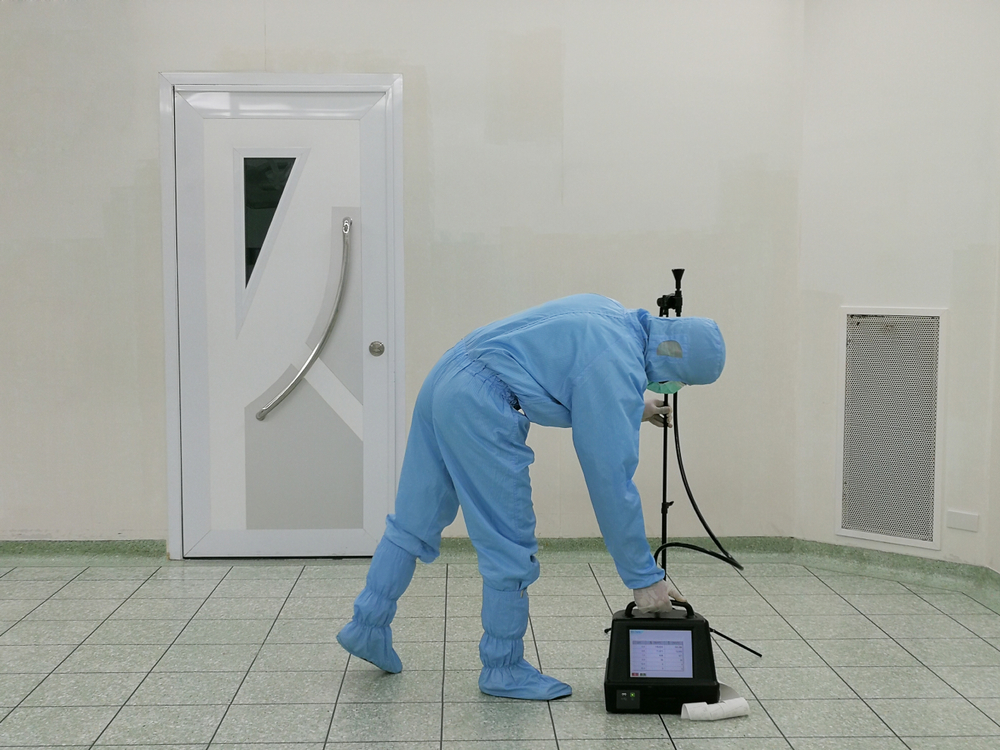
Cleaning Practices for Furniture and Equipment
Using the correct cleaning methods and products is critical for keeping furniture and equipment free of contaminants. Key practices include:
- Cleaning surfaces with lint-free wipes and non-corrosive disinfectants.
- Following cleanroom-grade cleaning protocols that minimize particle generation during the process.
- Paying special attention to high-contact areas like work surfaces, seating, and storage handles.
Training Personnel
The human element is vital in maintaining a cleanroom lab environment. All personnel should be trained on:
- Proper cleaning techniques and the importance of adhering to protocols.
- Handling and maintaining sensitive equipment like fume hoods and HEPA systems.
- Using personal protective equipment (PPE) to prevent accidental contamination.
Regular training sessions not only reinforce compliance but also create a culture of accountability and excellence within the team.
By establishing comprehensive maintenance and cleaning protocols, cleanroom labs can preserve their integrity, extend the life of their equipment and furniture, and maintain compliance with industry standards. These steps are the foundation of a clean, safe, and efficient workspace.
Additional Reading: Clean Room Laboratory Essentials: Maintaining a Contaminant-Free Environment
Conclusion
Creating a cleanroom lab is an intricate process that requires careful attention to every detail—from furniture and equipment to flooring, lighting, and maintenance protocols. Each element plays a crucial role in maintaining the cleanliness, safety, and functionality of the space, enabling your team to work with precision and confidence.
By investing in high-quality solutions like powder-coated steel furniture, modular casework, and specialized cleanroom equipment, you’re meeting industry standards and building a lab environment that stands the test of time. When designed and maintained properly, a cleanroom lab becomes more than just a sterile space—it becomes a hub of innovation and excellence.
Whether you’re setting up a new facility or upgrading an existing one, choosing the right furniture, equipment, and practices will set the stage for success. With Genie Scientific’s expertise in cleanroom lab furniture and fume hoods, your lab is equipped to perform at its best, ensuring that every project is executed with the utmost precision and reliability.
